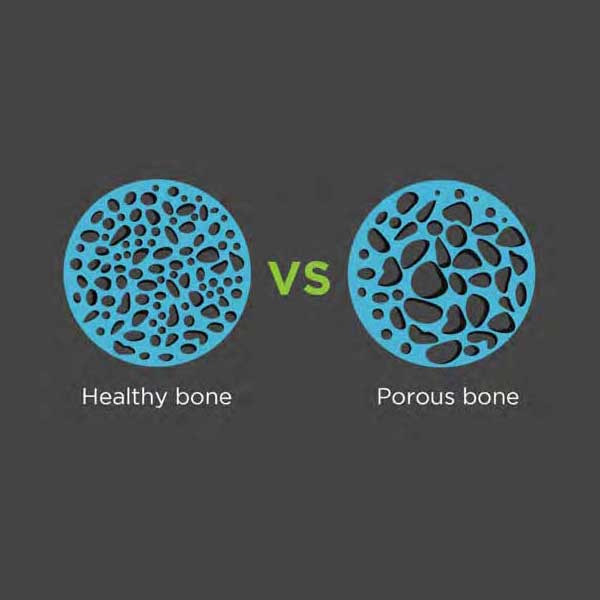Osteoporosis is known as a “silent” disease with no obvious signs or symptoms. Often the first sign of the disease is a potentially debilitating fracture. Osteoporosis is characterized by structural deterioration of bone tissue which causes bones to become porous and fragile.
Currently, about 10 million Americans have been diagnosed with osteoporosis. Of this number, 80 percent are women. Estimates suggest that about half of all women older than 50 will break a bone due to osteoporosis. It is estimated that another 34 million Americans have osteopenia or weak bones which places them at a greater risk for osteoporosis.
 Risk factors of osteoporosis include gender, race and age. Being female, of Caucasian or Asian descent and older in age all increase the risk of osteoporosis. Family history of osteoporosis and/or personal history of broken bones also play a role. Those that have lower levels of hormones such as estrogen or testosterone or low vitamin D and calcium intake are also at risk. Long-term use of tobacco, alcohol and some medications can also place individuals at a greater risk for osteoporosis.
Risk factors of osteoporosis include gender, race and age. Being female, of Caucasian or Asian descent and older in age all increase the risk of osteoporosis. Family history of osteoporosis and/or personal history of broken bones also play a role. Those that have lower levels of hormones such as estrogen or testosterone or low vitamin D and calcium intake are also at risk. Long-term use of tobacco, alcohol and some medications can also place individuals at a greater risk for osteoporosis.
Three factors essential for keeping your bones healthy throughout your life are: 1) adequate amounts of calcium, 2) adequate amounts of vitamin D, and 3) regular weight-bearing exercise.
Physical Therapists can instruct on how to maintain proper alignment throughout all mobility including walking and stair management. Physical therapy staff can also provide strengthening programs to assist in the prevention of injuries as well as education on fall prevention,
Occupational Therapists can teach safe and adaptive techniques during self-care tasks such as dressing, bathing and bed mobility to prevent injuries. Occupational therapy staff can also provide adaptive equipment to make daily activities easier and allow for energy conservation.










 © 2025 Kirby Pines LifeCare Community. All Rights Reserved |
© 2025 Kirby Pines LifeCare Community. All Rights Reserved | 